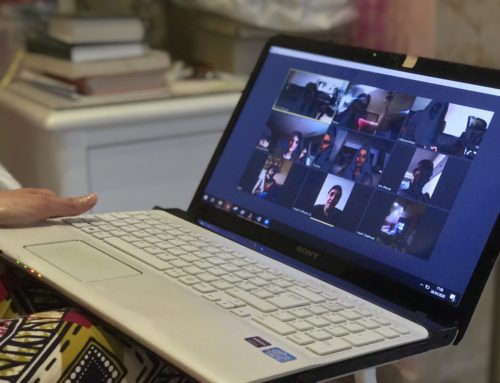
Peter Panepento
Our public relations expert Peter Penepento is back this month with a great post on how to work your data into a story the media will want to help you tell. ~Kivi
Guest Post by Peter Panepento of Panepento Strategies
Data and research can be powerful tools for nonprofits that are looking to call attention to their work.
This is especially true if your organization is looking for media coverage. Reporters and editors love to latch on to stories that are based on new research or reveal an emerging trend.
If your nonprofit conducts an annual survey, collects data about the impact of its work, or has seen significant growth in fundraising or volunteering, chances are you have a great story to pitch to the news media.
But as someone who has worked the beat as a reporter and sat in an editor’s chair, I can say that most nonprofits (and businesses, too) have a difficult time pitching stories about their data and research.
And as someone who has done a lot of storytelling with data, I can see why.
When you’re confronted with spreadsheets full of numbers, it’s not always easy to spot the story that’s buried in all of those rows and columns.
So how do you find stories in your data?
It all starts with asking the right questions. In the same way a reporter interviews a source or a detective interviews a witness, you need to interview your data — asking questions that will help draw the conclusions you need to go forward.
If you ask the right questions, you’ll likely find stories in your data that you can ultimately pitch to the media. You’ll also likely gain insights that will help your organization better understand its work and impact.
Here are some questions you should always try to ask when you’re “interviewing” your data or research:
What has changed?
It might seem obvious, but if you have data that spans a period of time, the first thing you should try to explore is what has changed during that time span.
Was there an increase in the number of people coming into your hospital’s emergency room? Was there a decline in the amount of federal money that supports a key program? Has your organization been able to serve more people or raise more money?
If you can find interesting changes over time, you’re on your way to finding a story to tell.
Usually, the next step after you find the trend is to determine why it’s happening. Once you’ve found that trend, talk to key people inside of your organization who can provide reasons what is driving the trend.
If you can develop a pitch that spotlights a trend and offers the theory behind it, you’re serving up a story on a silver platter to a smart reporter.
What are the outliers?
When you’re looking at data, some of the best stories can be found in the outliers — the pieces of data that are outside of the norm.
It’s important when you’re looking at your data or research to isolate those outliers and find out why they happened and what they mean for the larger dataset.
I recently worked with the Peer-to-Peer Professional Forum to analyze and produce its annual report on the nation’s 30 largest peer-to-peer fundraising programs. When we compared the total amount raised by these top 30 programs between 2013 and 2014, the figure was essentially flat.
But when we isolated the outliers — the programs that had fundraising decreases that were much larger than the norm — we noticed a really interesting trend. If we took out two big and well-established charities that had the biggest declines, fundraising totals actually increased by a healthy amount for everyone else.
We had our story.
The biggest, most established programs were struggling while a number of smaller, younger programs were growing quickly.
It was a meaty storyline that revealed a newsworthy trend. It was so newsworthy, in fact, that we ended up getting coverage from NPR.
How can we group information?
You can also find great stories in your data by figuring out how you can group information within your dataset.
In the P2P Forum example, we were able to group information by type of campaign — big, established programs vs. smaller, newer programs.
You might be able to group your organization’s in other ways: by the age or race of those receive services, by the home neighborhoods of your supporters, by the income or political ideology of people who support a key piece of legislation your organization supports.
Sort your information in different ways to see if you can find patterns among these groups. As patterns emerge, explore why they’re happening and whether they reveal an important insight.
What is surprising?
We all love stories with an unexpected twist. If your data reveals something that surprises you or challenges what you think you know, chances are it will do the same when you pitch it to a reporter or editor.
If you ask these questions about your data, you’re likely to find something that’s newsworthy.
But you still need to get the attention of the reporter or editor who will ultimately decide whether to write a story or air a report about your findings.
Which leads us to a bonus question:
How do we pitch our story?
There’s no one answer to this question, since each story is different.
But you should always try to follow one key principle: keep it simple.
Think about the key story you want to tell, and focus your pitch how the data explains that story.
“For me it all starts with the story,” says Matt Scharpnick, co-founder of Elefint Designs, a company that does a lot of data visualization work for nonprofits. “I ask myself, ‘What is the most important thing people need to understand?’ I often consider what people misunderstand or are intimidated by, where they tune out or give up. Then the job of the visualization becomes to show at least this one thing clearly.”
Matt’s explanation about how he creates data visualizations should guide how you think about pitching your data story to a reporter. Focus on one or two key findings and make those the focus of your pitch. Resist the urge to throw tons of statistics into your introductory email or release.
You should also offer to provide the full report or data set to the reporter so she can see your work and explore her own storylines.
But if you’ve interviewed your data correctly, chances are the story you pitch will become the story she chooses to tell.
Peter Panepento is principal at Panepento Strategies, a full-service content, digital, and social strategy firm for nonprofits and socially-minded companies. He was formerly an assistant managing editor at the The Chronicle of Philanthropy, where he led its transition into digital journalism and social media — a transition that included the creation of some of the nonprofit world’s richest online communities, the launch of a highly profitable webinar series, and the creation of new digital products such as the How America Gives giving database.






